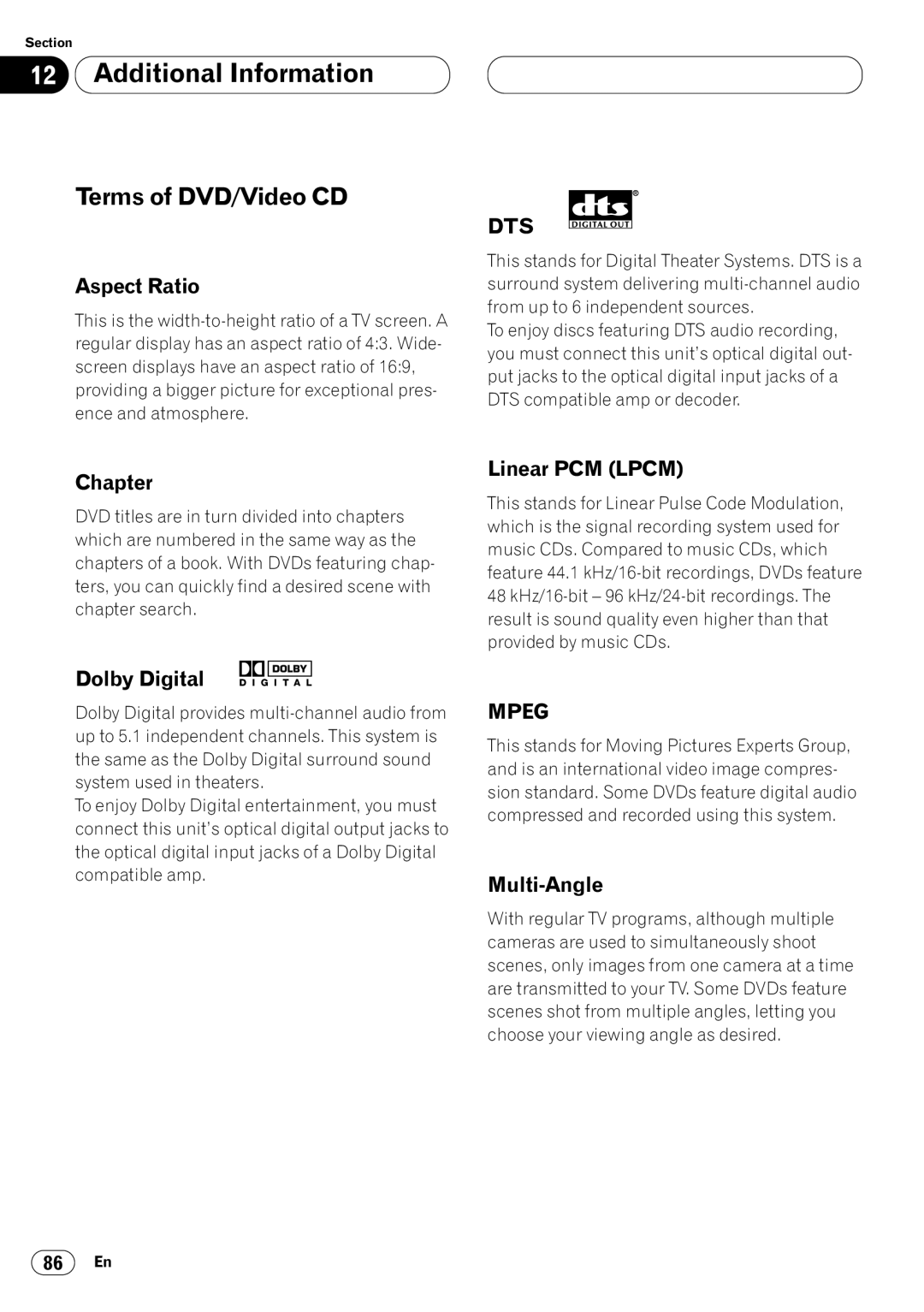
Section
12Additional Information
Terms of DVD/Video CD
Aspect Ratio
This is the
DTS
This stands for Digital Theater Systems. DTS is a surround system delivering
To enjoy discs featuring DTS audio recording, you must connect this unit’s optical digital out- put jacks to the optical digital input jacks of a DTS compatible amp or decoder.
Chapter
DVD titles are in turn divided into chapters which are numbered in the same way as the chapters of a book. With DVDs featuring chap- ters, you can quickly find a desired scene with chapter search.
Dolby Digital 1
Dolby Digital provides
To enjoy Dolby Digital entertainment, you must connect this unit’s optical digital output jacks to the optical digital input jacks of a Dolby Digital compatible amp.
Linear PCM (LPCM)
This stands for Linear Pulse Code Modulation, which is the signal recording system used for music CDs. Compared to music CDs, which feature 44.1
48
MPEG
This stands for Moving Pictures Experts Group, and is an international video image compres- sion standard. Some DVDs feature digital audio compressed and recorded using this system.
Multi-Angle
With regular TV programs, although multiple cameras are used to simultaneously shoot scenes, only images from one camera at a time are transmitted to your TV. Some DVDs feature scenes shot from multiple angles, letting you choose your viewing angle as desired.
86En
